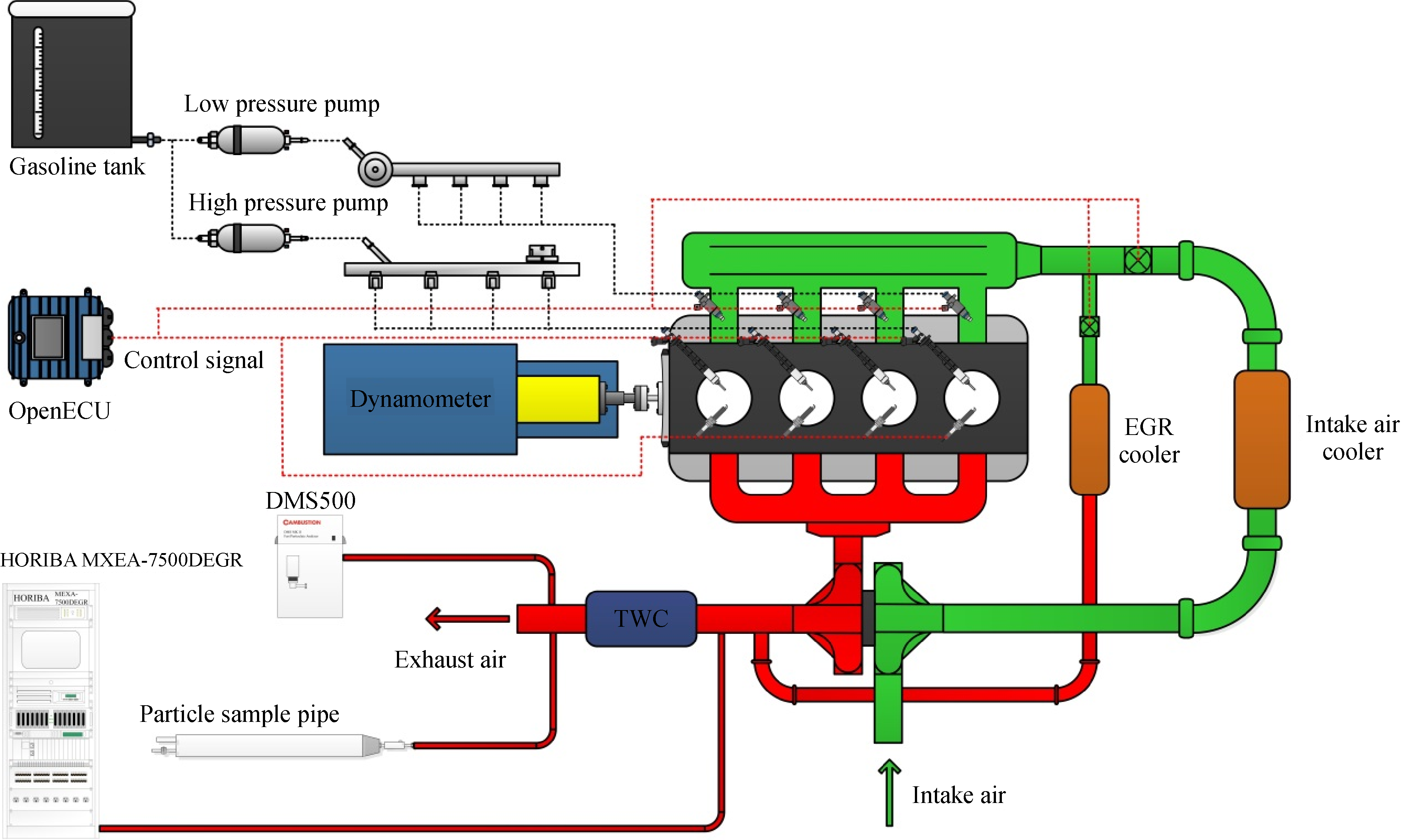For lean burn, incomplete combustion generates a large amount of total hydrocarbon (THC), and Lambda has exceeded the operating range in which the TWC can efficiently remove NO
x. Thus, these two gaseous emissions are two important indicators in the research. The main sources of THC are incomplete combustion, cylinder wall quenching, the slit effect formed by pistons and cylinder walls, and the adsorption of fuel films and deposits [
29,
30]. For the dual injection stratified lean burn, a large number of small radicals are generated by the fuel in the local rich mixture at the beginning of combustion. Some of these radicals participate in the oxidation reaction at the flame front, and the others diffuse to the unreacted area to form unburned THC and nucleation particles. NO
x is mainly derived from the reaction between the activated nitrogen molecules and the excessively rich oxygen molecules at a high temperature. Therefore, high temperature and oxygen enrichment are two indispensable conditions for NO
x generation. As shown in Fig. 6, the THC emissions gradually increase with increasing Lambda, while the NO
x emissions gradually decrease. When Lambda is small, the THC emissions are relatively close at different DI ratios, while the NO
x emissions change greatly with the DI ratio. When Lambda is large, the NO
x emissions are relatively close at different DI ratios, while the THC emissions change greatly with the DI ratio. The combustion analysis reveals that an increase in Lambda leads to a decrease in the surrounding lean mixture fuel concentration, and thus, the combustion flame propagation speed decreases, and the proportion of unburned fuel increases. The heat capacity of the mixture increases with increasing Lambda, and the heat release rate decreases with combustion deterioration. As a result, the total combustion heat release decreases, which means that the in-cylinder combustion temperature decreases. Therefore, the THC emission increases because of the increase in incomplete combustion, and NO
x decreases because of the decrease in the in-cylinder combustion temperature. At a high DI ratio, relatively more small radicals decompose in the local rich mixture. These radicals increase the combustion flame propagation speed and diffuse to the unburned area, resulting in a higher THC emission. When Lambda is small, the fuel concentration in the local rich mixture is higher at a high DI ratio, which results in a relatively high combustion temperature with oxygen enrichment. Therefore, at a Lambda of 1.2 and 1.4, the NO
x emissions at high DI ratios are both higher than those at low DI ratios. When Lambda increases, the combustion temperature decreases rapidly, and the NO
x generation process is suppressed. Therefore, the NO
x emissions at both high and low DI ratios remain at relatively low and similar levels.






















